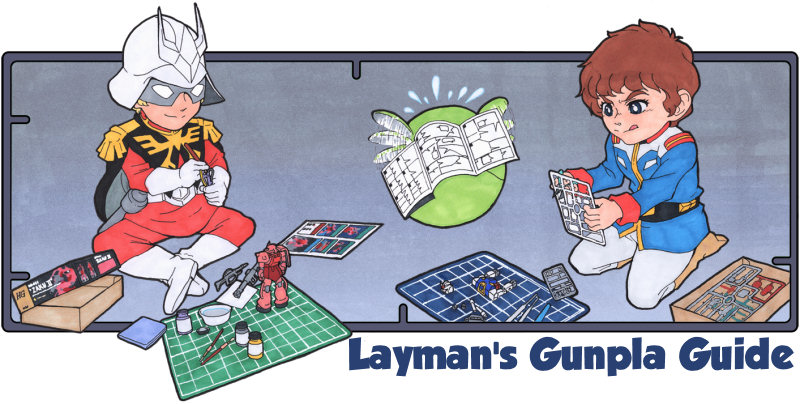Here's one of the main reasons why sanding is a necessary step before any paint job, aside from removing nubs. Though most surfaces look smooth, there will always be indentation on the surfaces caused by underlying support struts shrinking the plastic surface it’s supporting unevenly, forcing the surface it is connected to to become depressed. There are also plastic swirls, spots where plastic from opposite gates meet.
 |
| Left: light sanding shows surface imperfections. Right: fully sanded surface |
Ignoring
these depressions and imperfections would ruin an otherwise fine paint
job, since paint, especially gloss finishes, would make these
depressions more visible. That's why for most, skipping sanding is a
no-no. In fact, most people, like myself, enjoy the Zen of Sanding,
since it allows me to focus. A botched-up sanding job (like,
oversanding, which can remove fine details that can be difficult to
redo) could also ruin it.
 |
Ugly paint swirls are caused by primer/paint reacting to the Gunpla's protective coating |
Some modelers employ the use of putty, which they file and sand later on to flatten and/or smooth out the surface, but, since I don't use putty, I opt to directly file the surface over, then sand it smooth. Of course, this works for shallow depressions. For deeper depressions and/or pit damage (the hole created by force-pulling a nub with a dull or shallow cutter), I cement a shaped strip of polystyrene sheet, wait for a half a day or so, then file and sand smooth. Sanding prepares the surface you are working on for priming.
For resin kits, resin glue or superglue does the job. Some modelers
make their own resin putty by combining superglue and talcum powder.
In some cases, light sanding with medium to high grit sandpapers would
be enough, but, for majority of nub removals and heavy modifications,
progressive sanding is a good practice.
Priming, on the other hand, provides a smooth surface for base paints
to adhere to. Priming also allows you to spot problematic areas, like
micro-scratches, either natural or introduced during sanding, and can become fillers for light scratches. Certain primers, like Bosny paints, adhere to most surfaces almost
readily (whether they are sanded or not), some primers do require a well- sanded surface to adhere to.
 |
| It's Prime Time |
Light priming is ideal for any paint job that requires multiple layering, like candy tones or gradient effects that will be later top-coated. A full coat of primer is best for single, or flat-color schemes, or for hand brushing.



No comments:
Post a Comment